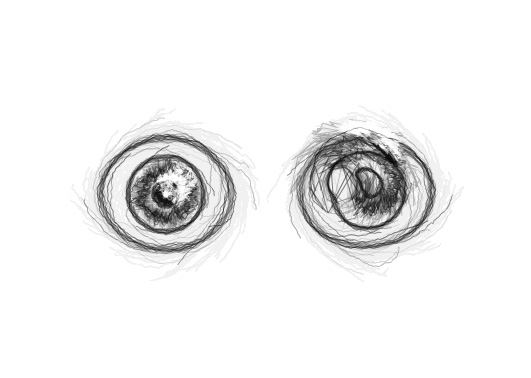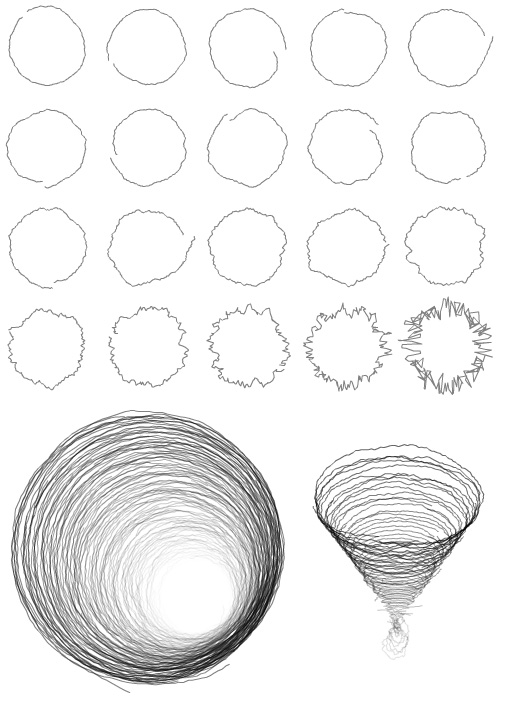Bicuspid Variation Tooth
Friday, March 26th, 2010
Last summer I spent some time in search of a nice equation for a tooth. This one worked out well in the end.
sketching with code - flash - actionscript - processing

Last summer I spent some time in search of a nice equation for a tooth. This one worked out well in the end.
It's odd, every time I start messing with recursive functions for drawing plants and trees I always end up getting sidetracked.... This time around, after getting some pretty nice looking trees (will post about them sometime soon) I stumbled upon an interesting (and simple) way to get programmatic lines and curves to look a bit more hand drawn... After isolating the technique and ripping it out of my tree generating program I created these generative eyes:






Click any of the above images to view the flash version
I rendered out a few larger images and put them up on flickr here
This isn't the first time I've coded eyes... or at least, not the first time I've code an eye. A few years back I programmed an eye in processing... you can see it here. I was never totally satisfied with the processing eye... I sort of gave up on it... I wanted to make it more photorealistic somehow, but never got around to it...
There are certain things that people just automatically draw without thinking about it... for me these are:
1) bald old man heads
2) ears
3) hands
4) eyes
5) teeth
possible a few more, but the above 5 are the main ones...
Drawing these things for me is pretty much automatic - and I never get tired of it. For a long time I wasn't able to combine programming and drawing, but after I created the daily log - I was occasionally able to combine drawings and programming - One of these programs was my first real OpenGL C++ program the combination project. Lately, with vCanvas and the technique I used for the above eyes - the combination of drawing and programming has been much more organic...
The eyes are built with the use of one function:
If you run that in your timeline you'll get one roughly drawn circle... Not all that interesting, but the potential begins to become obvious if you just play with it for a few minutes:

The above image was generated with the roughCircle() function and this extra messy code:
The messiness of this code is actually important... when I'm "drawing" or "sketching" with code I'm not thinking about putting i/2 into a variable for readability and speed reasons... I'm thinking... "oh, the circles should be offset on the x a little less than i every iteration." Same with weird things like this.. 1 - (i / 100)-.4 ... just achieved quickly through trial and error... heh, this is worse (1 - (i / 100)/2) - .5...
I've been tweaking a programmatic sketch for the past couple days... It contains three cell-like elements that randomly move around the screen. I've been trying to decide how to take it further...

Click above image to view flash version
To take it farther I just want to add some additional elements and maybe change the cells behavior a bit - something more than just floating around randomly - I'd like to have them eat other little cells - or change/die over time...
A few years back I wrote something like this in director. It runs super fast now because I put the framerate at 999... too lazy to go through my archives and dig up the .dir... so here's a still:

Using a convolution filter to create an emboss works nicely, but is very very slow. You can create an emboss effect by using copyPixels(), draw(), blend modes and a BlurFilter:
I also did this kind of emboss in processing a few years back. The meat of that looked like this: